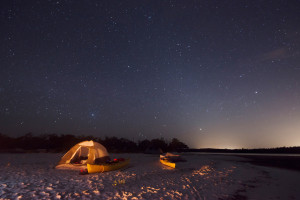 Are you planning a vacation to the Everglades, but you don’t want to break the bank? Camping is a fantastic alternative to staying in a hotel, especially when it comes to experiencing the vast wilderness of the Everglades.
Are you planning a vacation to the Everglades, but you don’t want to break the bank? Camping is a fantastic alternative to staying in a hotel, especially when it comes to experiencing the vast wilderness of the Everglades.
From endangered wildlife to rare plant species, Everglades camping immerses you in nature you can’t find anywhere else in the world – all while saving you money. But before you book your campsite, it’s important to understand which campground fits your unique needs. Here’s what you need to know about Everglades camping:
Frontcountry vs. Backcountry
Backcountry camping presents ultimate adventure. This style requires campers to trek or paddle to their campsite while carrying all the necessary gear. While the backcountry will expose you to untouched and lesser-known sections of the Everglades, it’s not everyone’s adventure. Frontcountry camping suits those who aren’t physically able or aren’t mentally prepared to venture deep into Everglades wilderness. With frontcountry camping, you can drive up to your camp site, so all of your food and equipment is handy.
Now that you know about the two different Everglades camping styles, it’s time to learn exactly which campground is right for you.
Everglades Frontcountry Camping
The Everglades has two popular frontcountry campgrounds: Long Pine Key and Flamingo. Sites at each campground range from $15-30 per night.
Long Pine Key, a bit more rustic than Flamingo, features restrooms, water, a dump station, a nearby picnic area but no RV hookups. This campground sits just 11 miles from the entrance to Everglades National Park. All 108 sites are available on a first come first serve basis.
Flamingo, located at the southernmost point of Florida, hosts 234 drive-in sites, 40 walk up sites and 65 RV sites. The campground is fully equipped with showers and a picnic area with grills. With easy access to hiking and canoe trails, campers enjoy plentiful day trips.
Everglades Backcountry Camping
With nearly 50 backcountry campsites in Everglades National Park, backpackers are sure to find the solitude they seek. Backcountry campers can choose from either paddling or hiking to their sites, which come in three varieties: ground sites, beach sites or “chickees,” platform sites found amid boundless water.
Backpackers must obtain permits 24 hours prior to setting out into the backcountry. Permits cost $15 along with camping fees of $2 per person per day. Summer travelers benefit from waived permit fees during Florida’s warmest months. Obtain your permit from the Flamingo Visitor Center or the Gulf Coast Visitor Center.
See the Everglades by Airboat
Everglades camping puts you up close and personal with unique plant and wildlife. Plus, it’s affordable. Because camping is so inexpensive, you can put money you’d ordinarily spend on a hotel toward more Everglades activities. An airboat tour is one Everglades activity you can’t miss. Click here or call Captain Mitch’s Everglades Airboat tours at 239-695-3377 to book your Everglades airboat adventure today.






